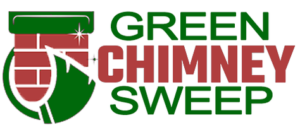Chimneys are an integral part of many homes, particularly those that use fireplaces or wood stoves. One critical component of a chimney system is the flue, which serves as the passageway for smoke and gases to exit your home safely. Proper maintenance of the chimney flue is essential for ensuring safe ventilation and preventing potential hazards. In this article, we will explore why chimney flue repair and maintenance is crucial, the risks associated with neglect, and what homeowners can do to keep their flues in optimal condition.
Understanding the Chimney Flue
The chimney flue is a vertical conduit inside the chimney that directs smoke, gases, and other byproducts of combustion out of the home. Typically made of clay, metal, or ceramic, the flue ensures that these harmful substances are vented outside, preventing them from entering living spaces. A well-functioning flue is essential for the safe operation of any fireplace, wood stove, or furnace.
The Role of Chimney Flue Maintenance
Ensuring Proper Ventilation
The primary function of a chimney flue is to ensure proper ventilation of smoke and gases produced during combustion. Regular maintenance keeps the flue clear of obstructions, such as soot, creosote, and debris, allowing for efficient airflow. Without adequate ventilation, these harmful substances can accumulate in your home, posing serious health risks to occupants.
Preventing Chimney Fires
Creosote, a highly flammable byproduct of burning wood, can build up inside the flue over time. If not regularly cleaned, creosote deposits can ignite and cause a dangerous chimney fire. These fires can quickly spread to the rest of the house, leading to significant property damage and even loss of life. Regular flue maintenance involves the removal of creosote buildup, significantly reducing the risk of chimney fires.
Protecting Against Carbon Monoxide Poisoning
Carbon monoxide (CO) is a colorless, odorless gas that can be deadly in high concentrations. Blockages or cracks in the flue can cause CO to seep back into the home instead of being properly vented outside. Symptoms of carbon monoxide poisoning include headaches, dizziness, nausea, and, in severe cases, death. Regular inspections and maintenance of the chimney flue ensure that it is free of obstructions and functioning correctly, thereby protecting your household from CO poisoning.
Extending the Life of Your Chimney
Regular maintenance of the chimney flue can extend the life of the entire chimney system. Neglecting the flue can lead to deterioration of the chimney structure due to the accumulation of corrosive substances like creosote and acidic residues. Timely maintenance and cleaning help preserve the integrity of the flue and the chimney, preventing costly repairs and prolonging the lifespan of your chimney system.
Risks of Neglecting Chimney Flue Maintenance
Increased Risk of Chimney Fires
As mentioned earlier, creosote buildup is a significant fire hazard. Neglecting regular cleaning can lead to thick layers of creosote, which can ignite and cause catastrophic chimney fires.
Health Hazards from Poor Ventilation
Blockages and cracks in the flue can lead to poor ventilation, allowing smoke, soot, and harmful gases to enter your home. Prolonged exposure to these substances can cause respiratory problems, exacerbate allergies, and lead to other health issues.
Structural Damage
The accumulation of corrosive substances in the flue can weaken the chimney structure over time. This can result in cracks, spalling bricks, and other forms of structural damage, compromising the safety of the chimney.
Costly Repairs
Ignoring chimney flue maintenance can lead to more severe problems that require expensive repairs. Regular inspections and cleaning are cost-effective preventive measures that help avoid major repairs down the line.
Steps for Proper Chimney Flue Maintenance
Regular Inspections: Schedule annual inspections with a certified chimney professional. They will check the flue for any signs of damage, blockages, or creosote buildup. Early detection of issues allows for timely repairs and prevents more serious problems.
Cleaning and Sweeping: Depending on how frequently you use your fireplace or wood stove, you may need to have your chimney flue cleaned more than once a year. A professional chimney sweep will use specialized tools to remove soot, creosote, and other debris from the flue, ensuring it is clear and safe for use.
Installing a Chimney Cap: A chimney cap helps prevent debris, rain, and animals from entering the flue. This simple addition can significantly reduce the risk of blockages and improve the overall efficiency of your chimney system.
Repairing Damaged Components: If the inspection reveals any cracks, gaps, or other damage to the flue, it is crucial to have these issues repaired promptly. Damaged flue liners or chimney structures can compromise ventilation and increase the risk of carbon monoxide poisoning and fires.
Using the Right Fuel: Burn only seasoned wood in your fireplace or wood stove. Green or unseasoned wood produces more creosote, increasing the risk of buildup in the flue. Avoid burning trash, cardboard, or other materials that can produce harmful byproducts and increase creosote formation.
Conclusion
Maintaining the chimney flue is vital for ensuring safe and efficient ventilation in your home. Regular inspections, cleaning, and prompt repairs help prevent chimney fires, carbon monoxide poisoning, and structural damage. By taking proactive steps to maintain your chimney flue, you can enjoy the warmth and comfort of your fireplace or wood stove with peace of mind.
For expert chimney flue maintenance and other chimney services, trust the professionals at Green Chimney Sweep. Contact us today to schedule your inspection and keep your home safe and warm.
